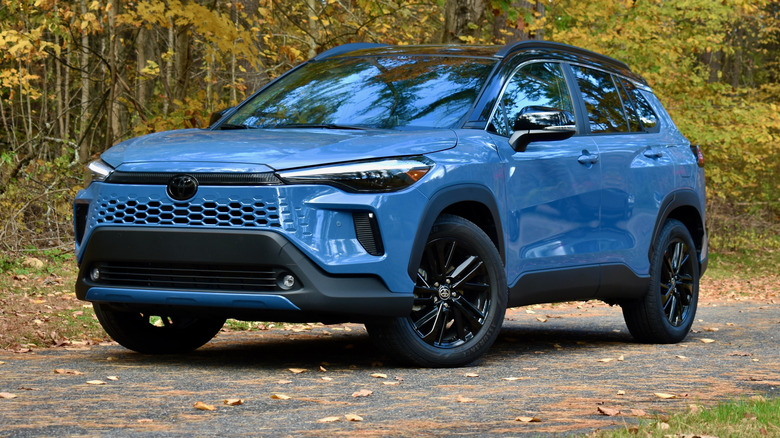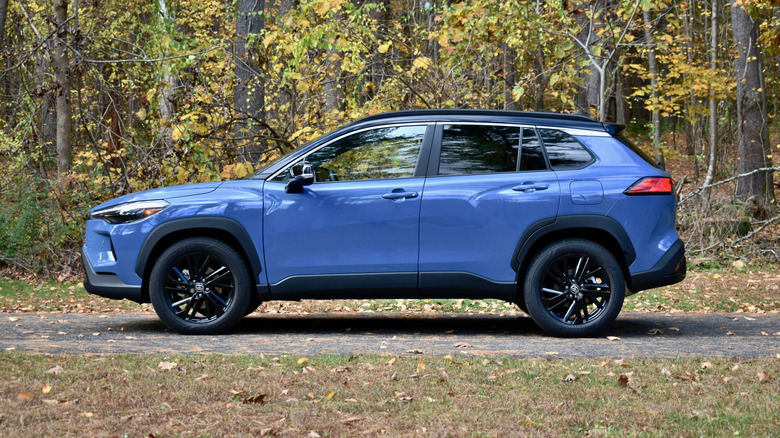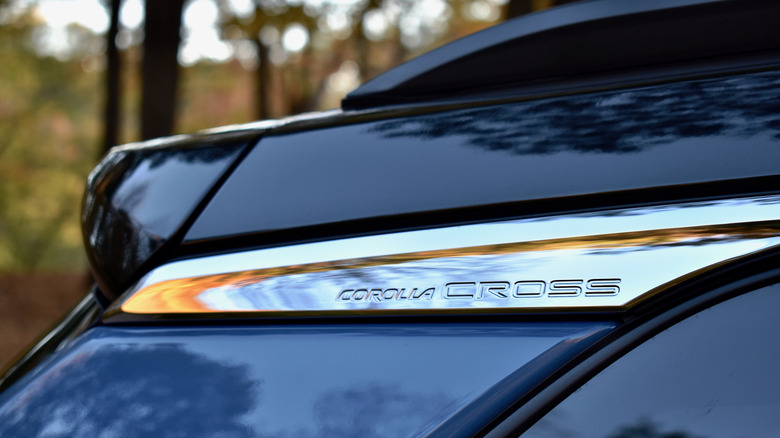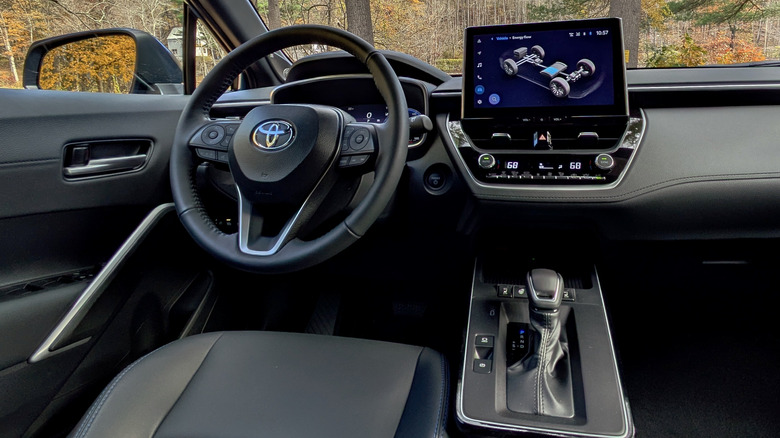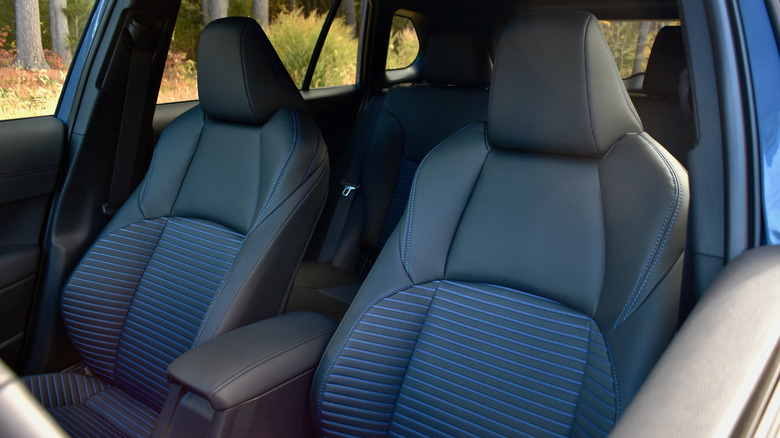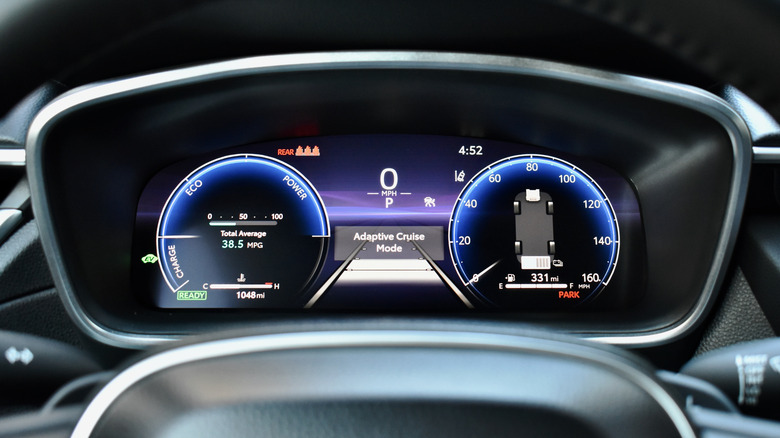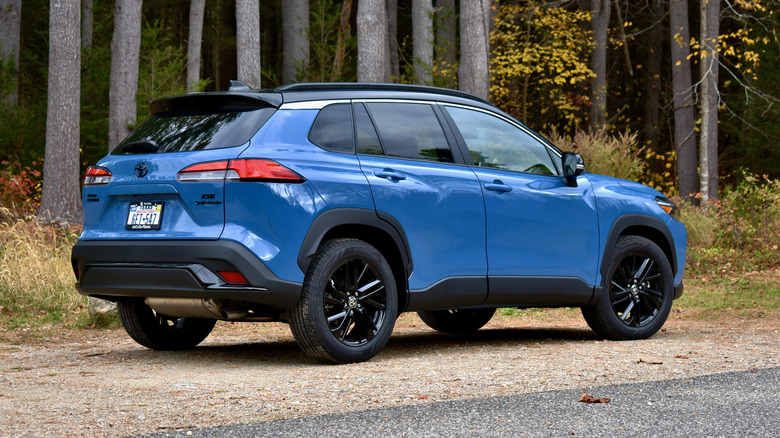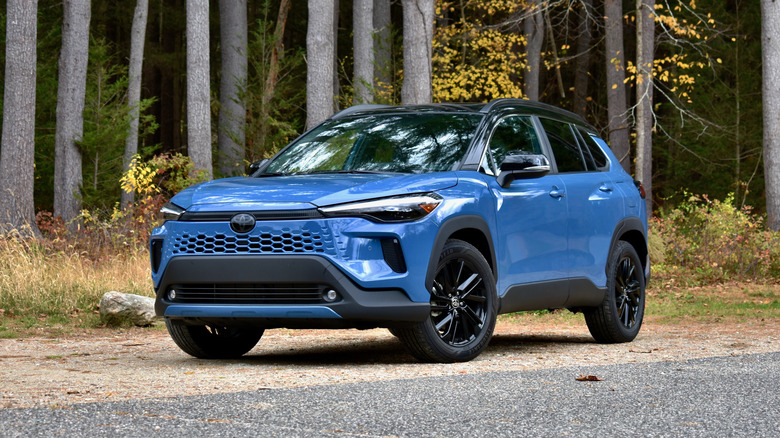The 2026 Toyota Corolla Cross Hybrid Isn't Fun, But It Is Frugal
Striving for economy and practicality often doesn't leave room for the remarkable. It's possible to build a basic car with character, but more often economy cars are defined as much by what they don't have—extra features that would raise the price—as what they do. The 2026 Toyota Corolla Cross Hybrid is as basic as small crossover SUVs get these days, but at a time of technological mission creep and worryingly inflated new-car prices, its basicness makes this Toyota remarkable in its own right.
The Corolla Cross is, straightforwardly enough, a crossover that uses the platform of the Toyota Corolla sedan and hatchback, helping the Corolla maintain its record as the bestselling nameplate in history. The Cross arrived for the 2022 model year, with the hybrid powertrain option following for 2023. For 2026, hybrid models get a mild restyle outside and a larger available touchscreen inside, changes that don't interfere with a circa-$30,000 base price and the promise of 42 mpg combined fuel economy.
Escaping the Matrix
The Corolla nameplate achieved its global bestseller status in part because Toyota applied it to a variety of different models. In addition to the expected roster of body styles, that's also included spinoff models chasing different market segments. In the early 2000s, the Toyota Matrix offered greater utility with different styling in an attempt to appeal to different kind of buyer. The Corolla Cross is trying to do the same thing, but with a predictably 2020s emphasis on rugged utility that's less original than its Millennial predecessor's styling theme.
Where the Matrix aimed to fit in parked outside a nightclub, the Corolla Cross is designed for the dirt parking lots of hiking trails. Its upright roofline, long hood, and generous plastic cladding are typical SUV. Headlights with a downward curve flank a tall grille, with a jutting plastic element below, giving the Corolla Cross a pouty look, like it's trying to avoid appearing too friendly or cute. Problem is, it just ends up looking boring.
Toyota's designers included some interesting details, such as the scalloping that defines the front and rear fenders, the "Corolla Cross" script embossed in the rear-pillar trim piece that separates the roof from the rest of the body (giving the optional black roof color maximum visual impact), and the new-for-2026 hybrid grille, which gets mesh similar to the Camry. But with so many small crossovers running around these days, the rugged look simply doesn't stand out.
What makes it a Corolla Cross?
Crucially, though, none of the styling has anything in common with the current Corolla sedan and hatchback, which are cars few people truly aspire to own. People do covet the reliability and quality associated with the Corolla nameplate, though, which is why this crossover has it. The crossover's TNGA-C platform is also shared with other Corolla models, which is why it can legitimately be called a Corolla Cross.
Hybrid models also use the same fifth-generation Toyota hybrid system as the Corolla Hybrid sedan, but with a larger 2.0-liter four-cylinder engine. That helps the Corolla Cross Hybrid develop 196 horsepower—58 hp more than the Corolla Hybrid—which gets it from zero to 60 mph in about eight seconds, according to Toyota.
Corolla Cross Hybrids come standard with all-wheel drive, with the same configuration that's optional on the Corolla Hybrid and larger Toyota hybrid crossovers like the RAV4 and Highlander. Another electric motor powers the rear wheels without any mechanical connection to the front wheels. The additional motor doesn't bring you an overall increase in power, just changes the distribution of the total already available between the axles for better traction.
Efficiency over fun
Like most other Toyota hybrids, the Corolla Cross distributes power through what the automaker calls an "electronically-controlled continuously variable transmission" or "eCVT." That brings to mind the belt-and-pulley CVTs preferred by automakers like Nissan and Subaru, but it actually uses two electric motors connected to a planetary gearset. One motor provides drive power, the other acts as a generator, absorbing energy under regenerative braking. For those keeping count, that makes for three motors total, including the rear-axle drive motor.
From the driver's seat, though, it's easy to mistake Toyota's eCVT for conventional versions. There are no fixed gear ratios and thus no stepped gear changes, but the smooth acceleration that provides is accompanied by moaning from the engine as it revs out of sync with wheel speed. Despite the electric assistance on hand, which can be especially felt moving off from stops, it's the sound of an overworked engine not designed to eagerly rev—which is sadly on form for a car like this.
The unappealing results when thrashing the powertrain can often help encourage more-efficient driving, but that wasn't the case here. We observed 39.1 mpg, which is pretty good for a crossover, but still short of the 42 mpg EPA combined rating. That, along with 46 mpg city and 39 mpg highway ratings, beats the Subaru Crosstrek Hybrid (rated at 36 mpg across the board), which uses a Toyota-based hybrid system and is also derived from a compact car (the Subaru Impreza).
Comfortable, but characterless
Like the powertrain, the chassis gets the job done as long as you aren't looking for fun. As with other vehicles based on the various flavors of TNGA architecture, the Corolla Cross Hybrid had an impressive feeling of solidity that sharply contrasts the tinny quality of economy cars of old. It's also reasonably quiet at highway speeds, with the wind noise generated by the large exterior mirrors a fair tradeoff for their useful size.
Compliant suspension also helped ensure decent ride quality, even on our XSE test car's larger 18-inch wheels; the lower S and SE trim levels have 17-inch wheels. That compliance seemed to come mostly from the amount of travel in the suspension, which also gives the Corolla Cross its SUV-appropriate ride height, along with eight inches of ground clearance. That should come in handy with deep snow, but there's nothing here that enables true off-roading.
The tall ride height gives the impression of standing on tiptoes, which doesn't exactly aid confidence when cornering. The steering is also slow to react and imprecise. A vehicle of this size could be decent fun, but that clearly wasn't part of the design brief. The Corolla Cross Hybrid turns and stops adequately, and that's about it.
A well-designed and functional interior
The interior was clearly designed on a budget, but there are some nice touches nonetheless. The central touchscreen protrudes out of a neat-looking panel that houses two central air vents; chrome trim loops around the dashboard to provide a bit more visual interest; and the doors have substantial-looking grab handles to carry the exterior motif inside. Most surfaces are cheap-looking plastic, but at least there's little of the dust/smudge-attracting piano-black variety.
The materials fit the Corolla Cross' station, as does the standard fabric upholstery. SofTex artificial leather is available on higher trim levels, with blue stripes on the XSE grade. For 2026, all models receive a new center console that moves the shifter a bit higher, while also providing better access to the available wireless charging pad in front of it. A new divider also helps keep phones from moving around.
The Corolla Cross is definitely a good choice for Corolla shoppers who need the utility of an SUV. Toyota doesn't sell a Corolla Hybrid hatchback, and the Cross' 21.5 cubic feet of cargo space behind the front seats and 44.0 cubic feet behind the rear seats is greater than the hatchback in any case. Both the Subaru Crosstrek Hybrid and Kia Niro have more space behind their back seats, however, while passengers in both rows will find similar headroom and legroom in all three vehicles.
Cumbersome tech
It says a lot about what automakers perceive customer priorities to be that, while so many other aspects of the Corolla Cross Hybrid hew to economy-car stereotypes of "good enough," it still gets plenty of screen space. The two lower hybrid trim levels—S and SE—come standard with a 7.0-inch digital instrument cluster and 8.0-inch touchscreen. The XSE has a 12.3-inch digital gauge cluster and a 10.5-inch touchscreen that's new for 2026.
Bigger isn't necessarily better, though. The cluster in our XSE test car prominently displayed "Adaptive Cruise Mode" text even when adaptive cruise control was not in use, and wasn't helpful in determining what features were actually being used. Wireless Apple CarPlay and Android Auto are standard, but exiting Android Auto required pulling up a separate app menu and selecting a "Toyota" icon—not exactly intuitive.
The Corolla Cross' basic nature thankfully reasserts itself with analog climate controls, but cumbersome buttons control audio volume. The driver also has a steering-wheel toggle, but while natural-language voice recognition is available, it requires a subscription for long-term use and also couldn't identify SiriusXM satellite radio stations.
Toyota has long made expected driver-assist features standard equipment, but that's become less of a differentiator as other brands have followed suit. The equipment list is also, to some extent, a case of quantity over quality. Camera-based traffic-sign recognition is standard, for example, but not map-based speed-limit information that lets the car clock limit changes without having to "see" a physical sign.
2026 Toyota Corolla Cross Hybrid verdict
Pricing starts at $30,490 for the Corolla Cross Hybrid S, while the mid-level SE and all-boxes-checked XSE start at $31,810 and $33,030, respectively. That's a $3,060 premium over the cheapest all-wheel drive non-hybrid Corolla Cross (front-wheel drive is standard on non-hybrid models), but it buys gas mileage that's higher by 12 mpg combined along with an additional 27 hp.
The Cross is also a significant step up in price from the Corolla Hybrid sedan, which starts at $25,770 with front-wheel drive and $27,170 with all-wheel drive. You really have to want the added utility and tall driving position of the Corolla Cross but, judging by the industry trend away from traditional sedans, it seems most customers are happy to pay extra for that.
While there are a plethora of subcompact crossovers like the Corolla Cross, few offer hybrid powertrains. The new-for-2026 Subaru Crosstrek Hybrid offers more attitude and capability at a lower starting price ($28,415), albeit with lower mpg. The Kia Niro isn't available with all-wheel drive, but as a result it's more fuel efficient, with an EPA-rated 53 mpg combined. If pricing holds steady from the 2025 model year, it should also be cheaper than the Toyota as well.
The Corolla Cross is still one of the less-expensive new cars available, though, and the hybrid powertrain will help budget-sensitive consumers weather any fluctuations in gas prices. So while this bland box is a hard thing for car enthusiasts to love, it's definitely something the market needs.
